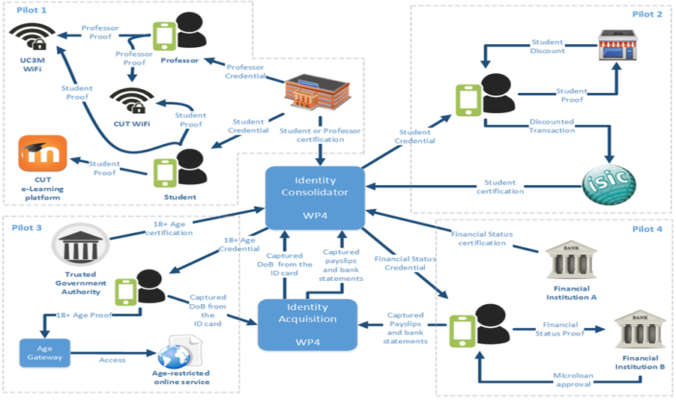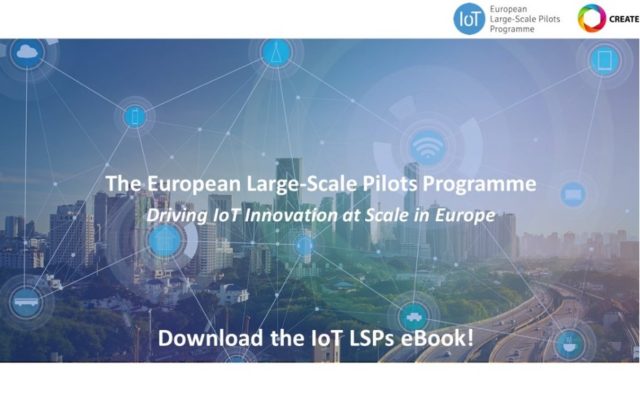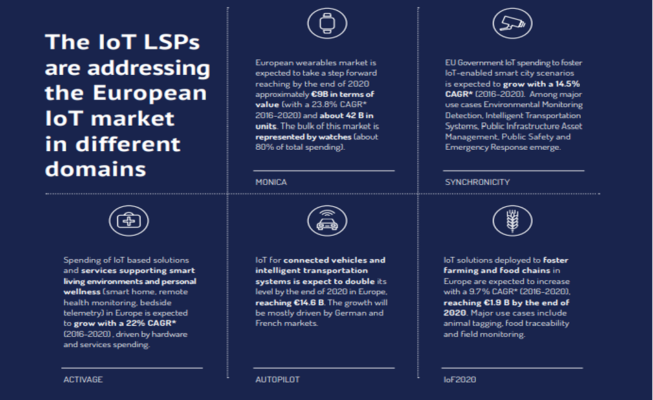Large scale pilots in IoT
Internet of Things (IoT) technology is a new step forward for mankind. When things are connected and people can control them, the quality of life will be greatly improved. However, the current implementation of IoT systems is still facing many difficulties due to asynchrony. There is still no common standard for IoT, each company uses different technology for their products. The industry is still in the transition period between traditional and modern production. As a result, adoption is still at a sporadic level. Large-scale pilots on IoT are a new way that can make IoT more widespread and widely approved, so let’s explore this topic with Speranza.
1. What is Pilot in production?
First, we will familiarize the concept of “pilot” in manufacturing industries, more deeply in information technology. A pilot is testing a built project or product for a small group of customers. This step helps to define the key functions of the product before it goes into production. In other words, it helps determine the feasibility and marketability of the product.
In information technology, pilots help control software quality. This release helps businesses get customer feedback, ensure the right purpose, and deploy the system in the right direction. The pilot solves the suspected error in the system and adds some requirements to be more suitable for users. Therefore, this is necessary work if the business wants its product to be perfect.
 Pilot process of student identity management application
Pilot process of student identity management application
Source: https://www.recred.eu/pilots-software
Pilot testing is different from the beta release. Beta is a release at the end of the project with incomplete features, users use it to experience first and suggest more features, After the Beta will be officially released to the public. A pilot is often used for new ideas or projects, i.e. in the early stages of a project.
The conduct of pilot testing depends on the scope and context of the project. For the general business enterprise, pilot testing is conducted with a group of users on a set of servers in a data center. Here are the steps to conduct a Pilot testing:
- – Step 1: Create a Pilot Plan to visualize the work
- – Step 2: Prepare Pilot test
- – Step 3: Deploy and inquire about the Pilot test
- – Step 4: Evaluate the test
- – Step 5: Conclude and prepare for product deployment
2. Large-scale pilots on IoT
The challenge of IoT reclines in the requirement of large-cost resources and good infrastructure. Large-scale pilots are the solution to this problem. This is a pilot but its range is much larger than usual. This process provides an overview of the goals and feasibility of applying IoT systems in schools, cities, and production areas. Such a test would include multiple interconnected solutions such as integrated camera surveillance systems with beacons, etc.
These projects often raise capital from the society and involve many parties from the supplier to the demand side. Large-scale pilots use a variety of new tools and technologies, applied in a wide variety of real-life situations. Its goal is towards the comprehensive development of IoT and the ability to connect and coordinate on a large scale. Its impact is not only new technological solutions but also creating value chains for users, affecting the socio-economic of a region, a country, or the whole world.

Large scale pilots on IoT toward smart city
Source: https://ifactory.com.vn/internet-of-things-la-gi/
3. Big examples in Europe.
The largest IoT pilot program is currently located in Europe with the official name of the IoT European Large-Scale Pilots (LSPs). Launched in 2016, it has the goal of IoT application for many different fields throughout the EU territory. Program to test new initiatives and approaches in industry/society using advanced tools and technologies. Anticipate the pros and cons of IoT adoption.

Large scale pilots on IoT could take European society development to the next level
Source: https://european-iot-pilots.eu/download-the-new-iot-lsps-ebook-the-european-large-scale-pilots-programme-driving-iot-innovation-at-scale-in-europe/
The big fields can be mentioned as smart cities, smart farming, assisted living. With a funding budget of up to 100M Euro, the program hopes to create a sustainable modern economic ecosystem, based on technological and community values. Below are typical projects being piloted.
ACTIVAGE
To create an IoT environment that helps the elderly, the project is being tested in 7 countries with the participation of more than 10,000 people. Solutions and services based on analysis of thousands of sensor devices. The devices collect data about the living environment, health information, and activities to determine the needs of the user.
The project is designed to be replicated across Europe, so it has a common platform architecture from which to build an application or service that is appropriate for each location. This architecture includes native and third-party APIs, components that support site-wide deployment, and provides interoperability between IoT devices or platforms.
AUTOPILOT
The purpose of the project is to develop an autonomous driving system, towards an IoT-connected transportation ecosystem including vehicles, infrastructure, and other objects. The plan is undergoing a large-scale pilot in Italy, France, Spain, the Netherlands, and Finland. The test results help a lot in assessing risks, legality, users and leave a lot of useful data for scientists. The market size is expected to grow strongly and it is estimated that 50% of car owners will have an autonomous mode by 2035.
The architecture of autopilot is the framework common to all locations, including the IoT layer, applications, and external services.
INTERNET OF FOOD & FARM 2020 (IoF2020)
This is a large-scale pilot of IoT in agriculture, a very potential industry. Conducting in 19 locations across Europe and focusing on 5 areas of crops, clean vegetables, fruits, meat and dairy, complexes, projects to build a new agricultural ecosystem of farming with technology high. Thanks to this Large scale pilot, scientists can fully assess the impact of IoT on agriculture and farmer adoption, thereby driving change around the world.
The architecture of IoF2020 is an open architecture, the system can be reused many times. Technologies from this pilot will pave the way for the development of automated farming, data collection, and processing by IoT devices, virtual food chains, and more.

Some typical projects of LSPs
Source: https://www.iof2020.eu/about/large-scale-pilot-programme
Conclusion
Large-scale pilots on IoT have great significance in applying IoT to our own lives. Base on practical tests, we will have an assessment of the scale, urgency, and effectiveness of the IoT system in practice. The more people use it, the more people will discover advantages and disadvantages to improve this system. With experience and enthusiasm, Speranza is a pioneer company building the foundation for IoT technology in Vietnam. We are at the forefront of consulting IoT solutions for manufacturing, providing IoT devices for businesses as well as households. Feel free when contact us!
Reference Source
- https://www.iof2020.eu/about/large-scale-pilot-programme
- https://www.guru99.com/pilot-testing.html
The post Large scale pilots in IoT appeared first on Speranza.
*** This is a Security Bloggers Network syndicated blog from IoT Blog – Speranza authored by Allen. Read the original post at: https://www.speranzainc.com/large-scale-pilots-in-iot/





